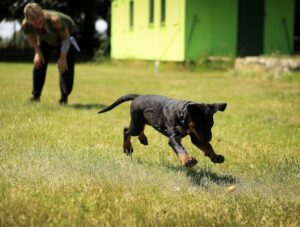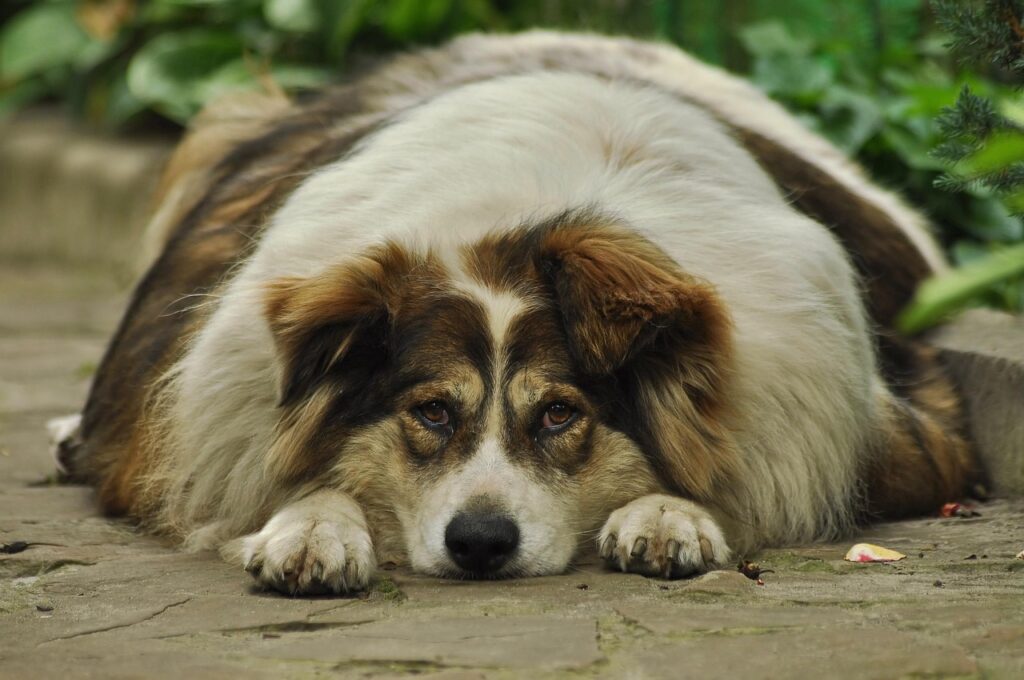Ah, our furry friends! The ones who give us unconditional love, endless tail wags, and wet kisses. But what happens when our beloved canine companions pack on a few extra pounds?
You’ve probably heard the saying, “A moment on the lips, forever on the hips.” Well, for our four-legged friends, this rings true as well. Obesity in dogs can lead to serious health problems, like heart disease, diabetes, and joint issues.
So, what can we do to help our furry pals shed some of that excess weight? Let’s dive in!
Table of Contents
Understanding Dog Obesity
First things first, let’s talk about why your dog might be overweight. Is it because they’re sneaking into the kitchen at night for a midnight snack? Or is it due to a lack of exercise? Maybe it’s both, or neither. Remember, certain breeds are more prone to obesity than others. And sometimes, underlying health conditions could be the culprit. So, it’s always wise to consult with your vet first.
Assessing Your Dog’s Weight
“But how do I know if my dog is overweight?” you might ask. Excellent question! Here’s a simple trick: try feeling your dog’s ribs. If you have to push hard to feel them, your dog might be overweight. If they’re clearly visible, your dog could be underweight. Ideally, you should be able to feel them with a slight pressure, with a thin layer of fat over them.
Diet Changes for Weight Loss
When it comes to weight loss, a balanced diet plays a crucial role. So, are you ready to trade in those fatty treats for healthier options?
- Swap out calorie-dense treats for healthier alternatives. Apples, carrots, or a bit of plain chicken can work wonders.
- Portion control is key. Remember, what looks like a small amount to us could be a mountain of food for a small dog.
- Consider a diet dog food. They’re formulated to be low in calories and high in nutrients. But always consult with your vet before making major dietary changes.
Exercise: The Key to a Healthy Pooch
We can’t talk about weight loss without mentioning exercise.

After all, a sedentary lifestyle is one of the major contributors to dog obesity.
- Regular walks are essential. Start with short, frequent walks and gradually increase the length and intensity as your dog gets fitter.
- Playtime isn’t just for fun. Fetch, tug-of-war, or even a game of chase can get your dog moving.
Regular Vet Check-ups
Regular vet check-ups are essential in tracking your dog’s progress and ensuring that the weight loss program is working. Your vet can provide a customized diet and exercise plan based on your dog’s breed, age, current weight, and overall health. Plus, they can rule out any underlying health issues that might be causing weight gain.
Keeping Your Dog Motivated
Weight loss is a journey, and your dog might need a bit of encouragement along the way. Use positive reinforcement to keep them motivated. Remember, praise, cuddles, and playtime can be just as rewarding as treats!
The Role of Patience and Consistency
This is not a sprint, but a marathon. Weight loss in dogs, just like in humans, requires time, patience, and consistency. Changes won’t happen overnight, but that doesn’t mean they aren’t happening. It’s like watching a tree grow; you may not see it happening, but with time and consistent care, you’ll see a big difference.
- Set realistic goals. Don’t expect your dog to lose all the extra weight in a week or two. Healthy weight loss should be gradual.
- Consistency is key. Maintain a regular feeding and exercise schedule.
- Monitor progress. Regular weigh-ins can help track progress and adjust the plan if necessary.
Key Takeaways
So, let’s sum it up, shall we? Helping your dog lose weight requires a multi-faceted approach:
- Understand the causes and implications of dog obesity.
- Assess your dog’s weight accurately.
- Implement dietary changes, focusing on healthier, low-calorie options and portion control.
- Make exercise a regular part of your dog’s routine.
- Regular vet check-ups are crucial to monitor progress and rule out health issues.
- Use positive reinforcement to keep your dog motivated.
- Be patient and consistent. Remember, this is a journey, not a race.
And there you have it! A comprehensive guide to help your furry friend embark on a healthier, happier life.
Don’t forget, every dog is unique, and what works for one might not work for another. As always, it’s best to consult with a professional before making significant changes to your dog’s diet or exercise routine.
And remember, the goal isn’t just for our dogs to lose weight, but to be happy, healthy, and active. After all, don’t they deserve the best?
Here’s to healthier, happier dogs, one paw-step at a time!


Dennis and Becca, have always shared a passion for man’s best friend. As dog enthusiasts, they put together articles that inform, engage, and captivate fellow dog lovers.